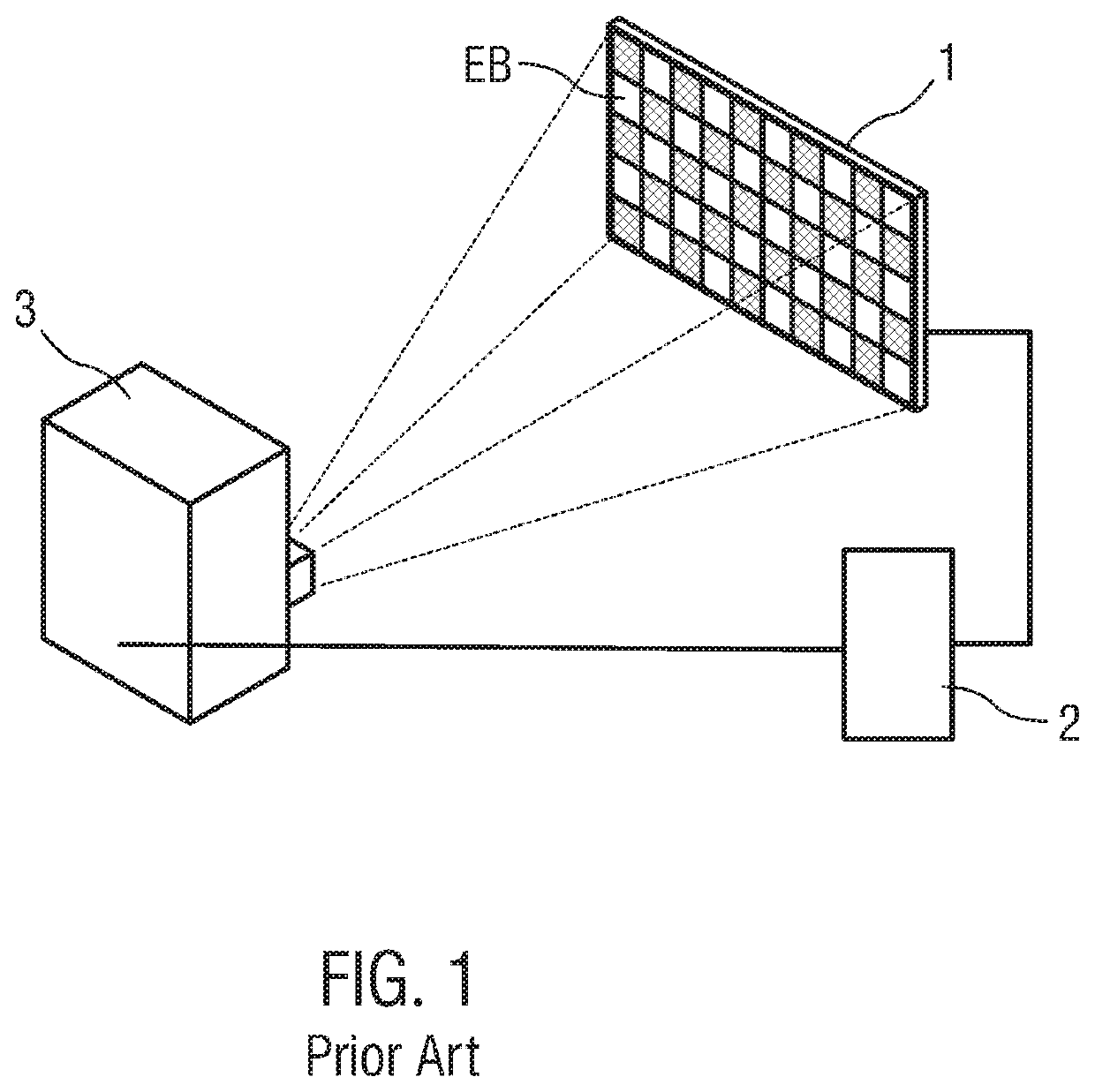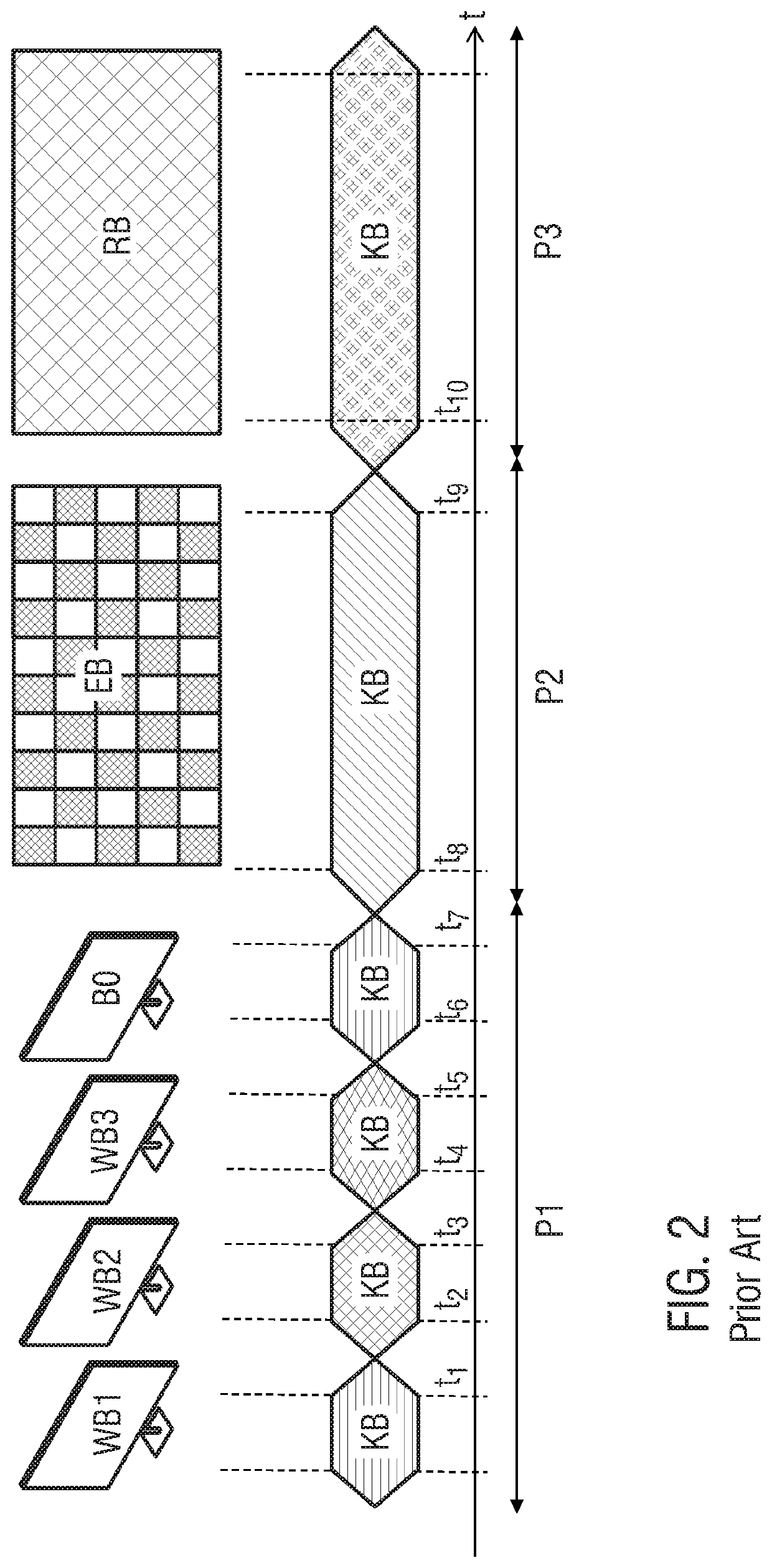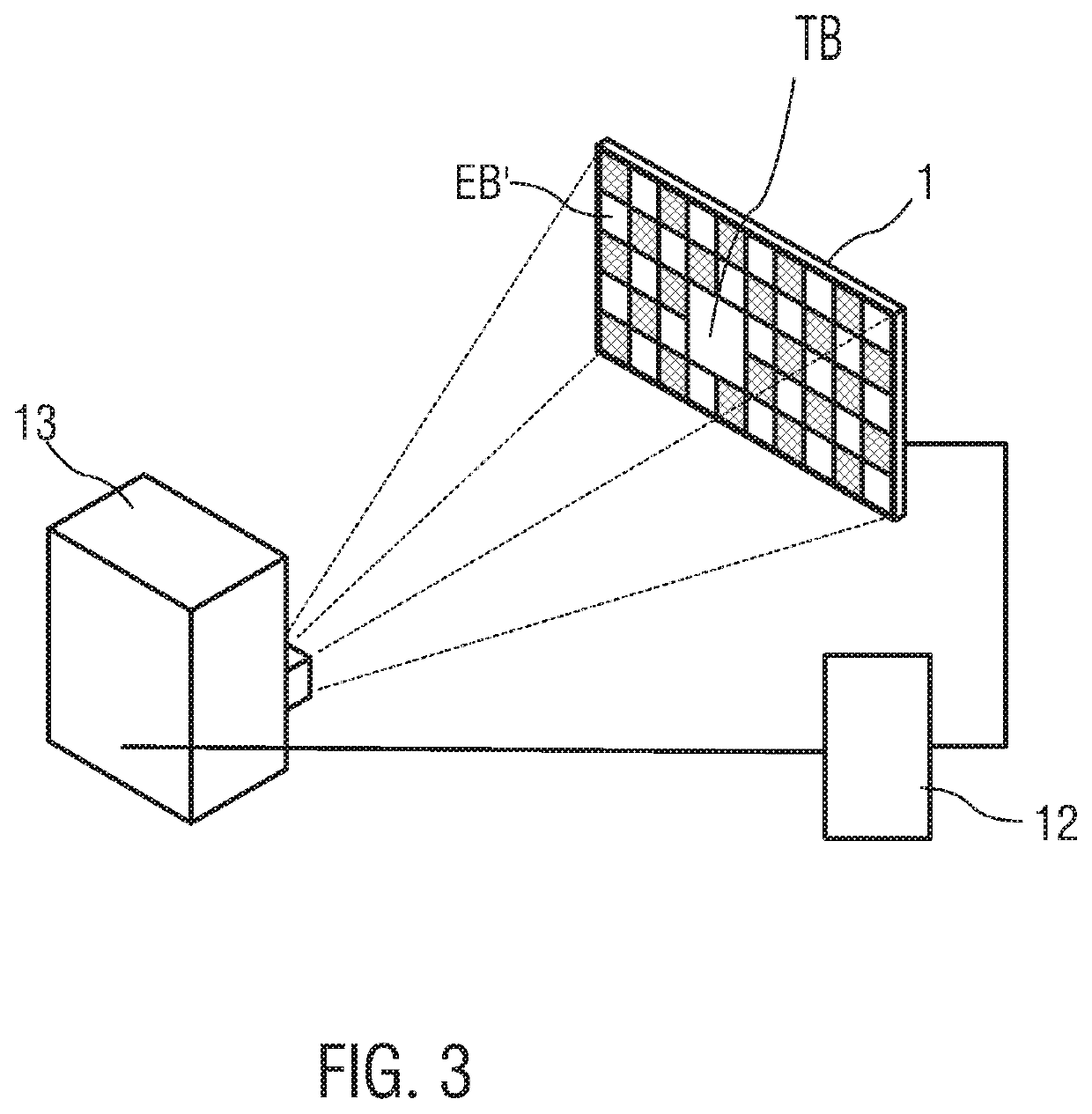Method For Determining the Start of Relaxation After a Burn-In Process at Optical Display Devices Controllable Pixel by Pixel
a technology of optical display device and burn-in process, which is applied in the direction of radio frequency controlled devices, instruments, television systems, etc., can solve the problems of delay not precisely known or only determined, and the burn-in behavior of other displays and projecting display devices working by other physical principles, and achieves long service time, high importance, and high rate
- Summary
- Abstract
- Description
- Claims
- Application Information
AI Technical Summary
Benefits of technology
Problems solved by technology
Method used
Image
Examples
Embodiment Construction
[0075]FIG. 1 is a schematic view of a measurement setup known in the art for charting the burn-in behavior of a display 1. The measurement setup comprises a computer 2 connected to the display 1 and to a camera 3.
[0076]The display 1 to be charted may for example be a liquid crystal display (LCD) or an organic luminous display (OLED organic light emitting diode).
[0077]The computer 2 is configured to output images or graphics on the display 1. Instead of the computer 2, a test image generator not shown in detail may be used to output images on the display 1.
[0078]A burn-in image EB being output on the display 1 is presently illustrated. The burn-in image EG is configured as a chessboard pattern with square fields distributed across the entire image area. The square fields have an approximately homogenous luminance density, wherein adjacent fields differ from one another in luminance density. In an embodiment, the chessboard pattern consists of fields with a maximized difference in con...
PUM
 Login to View More
Login to View More Abstract
Description
Claims
Application Information
 Login to View More
Login to View More - R&D
- Intellectual Property
- Life Sciences
- Materials
- Tech Scout
- Unparalleled Data Quality
- Higher Quality Content
- 60% Fewer Hallucinations
Browse by: Latest US Patents, China's latest patents, Technical Efficacy Thesaurus, Application Domain, Technology Topic, Popular Technical Reports.
© 2025 PatSnap. All rights reserved.Legal|Privacy policy|Modern Slavery Act Transparency Statement|Sitemap|About US| Contact US: help@patsnap.com



